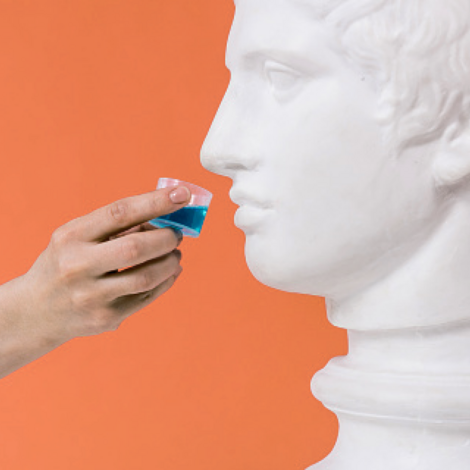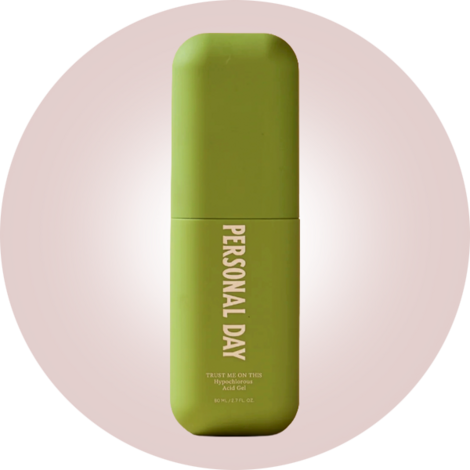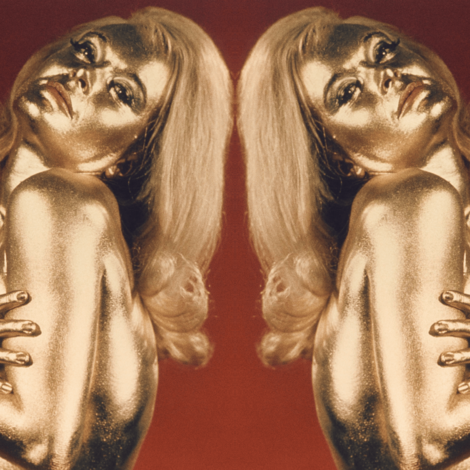“Soccer moms have gotten a bad rap,” says New York hairstylist Jessica Gillin. In fact, some soccer moms have great hair. Ditto football moms, tennis moms, and any other sideline parent. “It’s not fair to equate them with dorky hair,” she says. “Let’s take moms out of the equation.” So soccer moms get a reprieve. The real culprit of bad hair is now gourds. “You don’t want pumpkin head,” explains hairstylist Chris McMillan.
The bob haircut, in other words, has returned. If you’re picturing state senators and Lego ladies, let me stop you right there. The bob is back; its characteristic dorkiness is not. “The biggest difference between the cut now and what it was before is the shape—it’s still short but now it’s square, not rounded,” says McMillan, who’s based in Los Angeles and works with Michelle Williams and Courteney Cox. “It’s edgy.”
No one is suggesting that the bob cut is suddenly subversive any more than we’re saying pigtails lead to a life of crime. But this classic of all classic cuts actually does have roots in the anti-Establishment.
“In the 1800s, all women in the West had long hair,” says Rachael Gibson, the journalist behind the Instagram account the Hair Historian. “Hairdressers are called hairdressers because they dressed the hair, they didn’t cut it. There are stories of people suing their hairdressers for cutting their daughter’s hair, people getting sacked for cutting their hair, of men divorcing their wives. There are headlines about how scandalous it was.”
“Let’s take moms out of the equation.”
And as we well know from tote bags at farmers markets across the country: well-behaved women don’t make history. “At the turn of the century, there were only a handful of examples of women cutting their hair and it was outrageous and groundbreaking,” says Gibson.
Around 1914, an American dancer named Irene Castle had to have an appendectomy and quite practically decided to lop off all her hair before surgery. When the public saw her with her new short cut a brief while later, they were aghast! Outraged! But also … kind of intrigued. “Everyone had long hair at the time,” says Gibson, “so it really made you stand out.”
A few years later, so the story goes, Coco Chanel was at her home in Paris when a gas lamp exploded, singeing her hair. Et voilà! Mademoiselle had to cut it all off. Soon enough, scissors were the most important accessory you could own. Short hair now stood for freedom, for bravery, and, shortly thereafter, for flappers.
You might think that would be it. That women got the right to vote, chopped off their hair, let their new bobs sway in the wind, and ran into the open arms of gender equality. Oh, wait. Despite the freedom promised to women by various household appliances, the next half-century was obviously an equal-rights disaster. Which is why God gave us the 1960s.
“That was a moment of real emancipation for women,” says Gibson. It was the decade that hairstylist Vidal Sassoon created something called a five-point cut, which he demonstrated on fashion designer Mary Quant. Sassoon sheared Mia Farrow’s hair into a pixie cut for Rosemary’s Baby in 1968. Neither result was a bob, so why are we talking about them? Because they “were strong short cuts with a lot of power,” explains Gibson. And they paved the way for the next iteration of the bob.
But that iteration wasn’t something to celebrate, as the style lost its shock value, going “from scandalous and outrageous to quite practical,” says Gibson. Practical, as we all know, is the death of cool. The bob sunk into mumsy territory. It was timid and prim; it was suburban and resigned. It was a snooze. And there it stayed, boring to the core, running carpool, stockpiling juice boxes, and its edge became a thing of the past, along with tequila shots, bong hits, and bad decisions.

For years, it languished, but then recently, slowly, and indisputably, the bob started writing its newest chapter. One you could title “I’m More Outlaw than In-Law.” There was no one defining moment for this sudden turn of events, but when asked who was responsible, every hairstylist points to Hailey Bieber.
McMillan explains its appeal: “Super blunt, straight, square. Don’t blow it out and don’t fight the shape—lean into it. Let it be choppy and fucked up. Part it in the middle, tuck it behind the ears. A big part of it is the mindset.”
And this is what separates the bobs from the Roberts: there is no stuffiness to this cut. Just look at the people sitting next to Bieber at the cool kids’ table: Zendaya, Annabelle Dexter-Jones, Cara Delevingne, Megan Fox.
According to Gibson, maybe what makes it work isn’t just what you see but also what you know. “The graphic box bob is really high-maintenance,” she says. “You have to go to the hairdresser a lot to get it tightened up. It has an element of power.”
If you’re going to indulge, consider a few pointers: “A bad bob is shorter in back and longer in front,” says Gillin, who cuts model Scarlett Rose Leithold’s hair. “A good bob is not too layered. The front corners aren’t missing. If it’s angled with a lot of layers in front, it gets a mullet vibe.”
O.K., so you got all that? Make it short, square, and unlayered, and work in a good amount of attitude. Also, you might have to go to the hairdresser a lot more than you used to. But on the upside, if you need an emergency appendectomy, you’re set.
Danielle Pergament is a Los Angeles–based writer. The former editor at Goop, she frequently contributes to The New York Times





